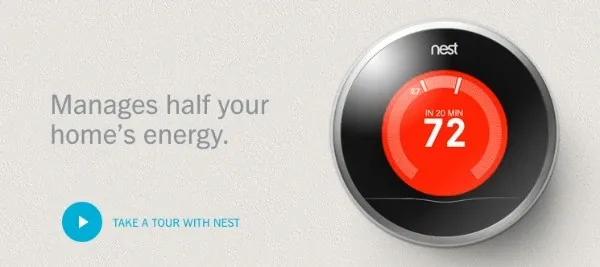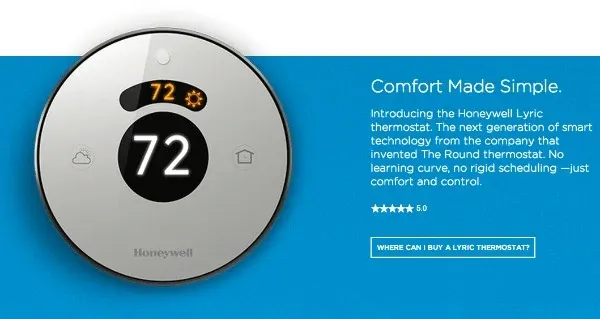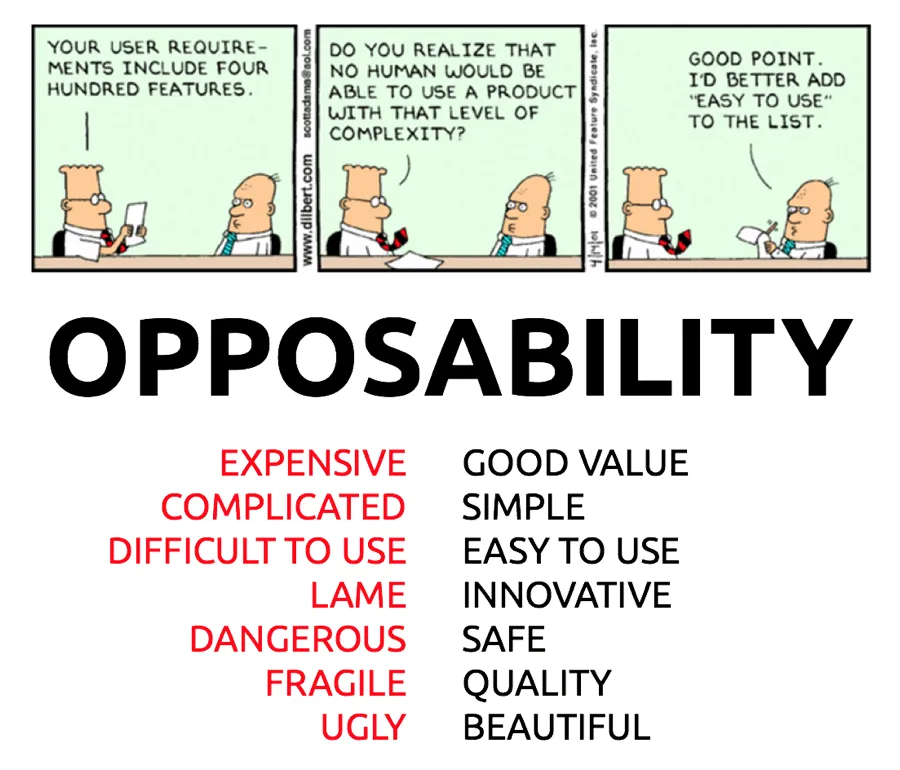🟢 The fundamentals of opposable marketing
I took the time to rewrite and hopefully clarify an essential article from 2017 on the link between marketing and pricing and why it should be as simple as possible.

Since 2009, I've delivered quite a few Executive MBA classes from Paris to Shanghai. It's an activity that I really enjoy — and, if I may say so myself, my students too. The thing is, such three-day courses are usually very educational for me. Having three days together is a real luxury, even by the current standards of executive seminars that we run directly in the industry. During this time, we have many opportunities to dissect the standard business logic and try to rewrite it very extensively in some cases. Among other things, this allows me to reassess what managers keep on finding difficult to grasp when launching innovative businesses and sustaining them later on.
Weirdly enough, one of the top issues that I encounter on how executives think about innovation and business, in general, has always been about marketing. There are many reasons why. Starting with the cold and harsh reality, most marketing strategies are abysmally bad. I’m not even saying they could be improved. They are not worth anyone's attention, which potential customers soon realize.
What is a business?
But let’s go back first to how you describe a business.
The starting point is deceptively simple. It's about explaining how you're solving a market problem and, as such, creating added value through a product. In that sense, the product or technology is only a feature of your business. It might be an essential feature of your business, but not your business.
You can safely unlearn everything you know about the marketing mix – the 4Ps of product, price, promotion, and placement, which only care about the product – without missing anything remotely useful. Focusing your marketing through the product/technology lens willingly lets go of any real chance your customers will care about what you can do for them because you're not explaining it.
OK, I admit it might be confusing at first.
Many companies are just in the business of building products and hoping for the best. This means that really, they can only sell their product specs, usually followed by a vague lifestyle claim of half-naked models languorously hugging said product. In the end, they’ll have intense brainstorming on what their brand is all about and emerge with confusing (but always grandiose) claims.

Opposable or non-opposable?
On the other hand, focused businesses that try to actively engage their market are easy to spot. Sure, they might talk about their product at some point. They would undoubtedly talk about the price (more on this later). But the real giveaway of focused companies is that they rely on opposable marketing.
For instance, this is not opposable ⤵️

Do you want to stay unfashionable with an outdated design? Do you thirst for insecurity, leak private pictures to the world, and have a battery that won't last long enough to use your phone through the day?
But this is opposable ⤵️

It's not great, mind you, but it does speak of a concrete problem solved for consumers that, at the time, wasn't solved by other brands. Apple wouldn't brag about having iPhones non-water resistant, but having them as such was the norm.
An even better example of opposability was the Nest thermostat before Google acquired the company ⤵️

Now I can make an opposite version of "manages half your home energy" in so many ways "manages only 10%..." or "manages 90%..." or anything in between. All these would make sense and allow me, the consumer, to appreciate in clear terms the amount of value I will extract from this product/technology.
As a sharp contrast, I give you the Honeywell Lyric. Yes, it's round too – I'm blown away (no) ⤵️

Marketing is hard? Keep it simple!
In essence, I advocate keeping things as simple as possible. If you do anything remotely interesting, explain it to your market.
When your customers ask why they should buy your product, don't answer:
We have the best quality at a competitive price, and we also spent a lot of time making our products extremely simple and easy to use while making them super-safe and fun.
Because the opposite of that is abysmal:
We have one of the crappiest products available on the market, and yet we will ask you an absurd amount of money for it. We also don’t care about how you’re going to use it or, to be honest, if it’s going to be dangerous or not. But hey, good luck in any case.
Which means the first claim is also abysmal. No one is not making good value, simple, easy to use, innovative, safe, fun, quality, etc. So why would you jump on this wagon and try to say it louder than the rest of the competition?

Dozens of books have been written about white space strategy, blue ocean, six paths, strategic horizons, five forces, value chain analysis, etc. But I could offer a simple and breakthrough solution. Let your potential customers just understand what you want to want to achieve for them.

Here's a cheat list in case you are still struggling with what I'm laying out ⤵️
- ❌ Good value -> ✅ Get an ROI within a month
- ❌ Easy to use -> ️✅️ Up and running in less than an hour
- ❌ Innovative -> ✅ First water-resistant smartphone
- ❌ Good quality -> ✅ We replace it within 24hrs at no cost
It doesn't have to be that, but that's the point. You're now opening the door to a clear commitment that speaks about the value you deliver or the problem you solve. And this is just the start. From there, marketers can finally get creative and have fun with your values to express them in a way that will tease, excite and seduce your market if need be ⤵️

An extra benefit of opposable marketing is that you can also clearly identify who you are competing with.

Going back to the Nest thermostat, its screen resolution, its interface, the number of sensors involved, or its round form factor might be interesting talking points. But they obfuscate to a large degree why that device is really attractive. The very fact that it’s a thermostat is of secondary importance when it does actually compete with roof insulation materials, double glazing, solar panels, and other products that aim for the same added value. Why? Because the business of Nest, as clearly stated from the get-go, is about saving energy. How much? 25% of your house energy consumption (the device helps save 50% on 50% of your energy bill = 25% total – every year).

Being opposable is just a fancy word to ask this simple question: are you explaining as clearly as possible what you want to deliver? If you are not a commodity product, why not give your market a chance to understand what you do? Being opposable is a good start at being serious about marketing, strategy, technology roadmap, talent management, and finance…
How much does it cost?
At some point in discussing how you do marketing, we inevitably have to talk about pricing. And whereas pricing is usually the most convoluted and brain-racking process linked to marketing, it shouldn't be.
There are only two quintessential answers to the question of how much you should price anything:
- If you solve a market problem/create value, you can have an opposable marketing message about your business/product link to price to the ROI you will create (my rule of thumb is starting at 30% of the total ROI created).
- If you don't solve a problem and have some value but no added value, you're a commodity in the market, and you need to price as low as you can afford. Eventually, you will have to reach zero.
How much was a Nest thermostat worth at launch in 2011? About $500. Why? Because it would allow USD 1,200 to 3,000 average savings for a typical American family over three years. Do you want to argue and bargain? Knock yourself out; I can lower my price to $300, $250, or $200. I still have a tremendous EBIDTA, and my price is on par with the value I create for my customers.
But if I try to price a product with such an ROI at a mere $10, my market would get confused. Why such a low price if you claim you're delivering so much energy savings? That doesn't make sense.
And for pure innovation? It even gets simple ⤵️

What about your company?
In that regard, pricing your value is an essential component of proper marketing, and it should feel relatively straightforward (even if it will always require obvious fine-tuning along the way). If it feels like rocket surgery, you're probably doing something wrong, or you're a commodity.
In the end, successful companies don’t sell products. They sell their added value. This is an easy lesson to understand for MBAs but a tough one to internalize and apply in real life. When looking for examples of proper opposable marketing, it's inevitable to point at Apple 2006's Get a Mac campaign ⤵️
Fast forward to now, and we have the 2018's What's a Computer ad ⤵️
Both of them fiercely point at opposable differentiators illustrating critical problems solved by the devices and, as such, their value. And you're probably thinking, sheesh... of course; it's friggin' Apple! But what about regular companies?
Fair enough, let me give you Samsung, which, most of the time, can't say anything remotely interesting about its products. And yet, sometimes they become as fierce as Apple. The following video was produced with Casey NEISTAT a rock-star YouTuber, and aired during the 2017 Academy Awards ceremony.
Enjoy and learn something much more potent than anything I could ever write ⤵️
Let’s pause and slow clap.
But then again, Samsung being Samsung, never committed to this vision of being the ecosystem of the new creators' generation and rapidly reverted to what I can only call laziness to remain civil ⤵️

Maybe Samsung is a commodity business, after all? The key question is: are you?




